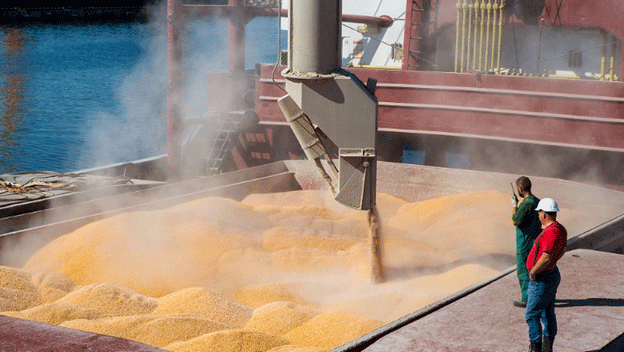For the first time in recent months, Russia is set to increase tariffs on major grain exports, a move designed to regulate profitability and price stability in domestic agriculture. Effective October 30, the export tariffs for barley, wheat, meslin (a mix of wheat and rye), and corn will all see notable adjustments. This comes as part of a broader governmental strategy initiated in June 2021 to support local agricultural markets through “floating” tariffs, but many producers express concerns that the policy has limitations in addressing income stability.
Details of Tariff Increases
The largest tariff increase will be on barley, which will more than double from 389.7 RUB to 802 RUB per ton. This is the most significant adjustment for barley since the reintroduction of tariffs on October 2. Wheat and meslin, which have faced weekly tariff hikes, will increase from 2,121.2 RUB to 2,272.9 RUB per ton. This marks the seventh consecutive week of tariff rises for these grains, bringing the cumulative increase to a level many in the industry find challenging.
Meanwhile, the tariff for corn, although increasing, will see the smallest adjustment among the major grains. Corn’s rate will rise from 2,671.7 RUB to 2,702.1 RUB per ton. These rates will remain in place until November 5.
Background on the Tariff Policy
Russian grain tariffs, calculated as 70% of the difference between base prices and indicative prices, were implemented in 2021 to stabilize income for domestic producers amidst fluctuating global grain prices. Base prices, which are set in Russian rubles, take into account the costs of planting, expected yield, and international market rates. These prices are adjusted periodically to help keep the local grain sector resilient to external market shifts.
In July 2022, the Russian government mandated that these tariffs be calculated in rubles, reducing dependence on the U.S. dollar and enhancing transparency. Currently, the base prices stand at 18,000 RUB for wheat and 16,875 RUB for barley and corn.
Indicative Price Trends
Indicative prices, which reflect the average export contract prices, are calculated weekly by the Moscow Exchange. As of October 30, indicative prices for all grains will rise. Barley will see the most pronounced increase, from $180.2 to $186.6 per ton. Wheat and meslin will increase from $217.4 to $220 per ton, marking the third consecutive weekly rise. Corn will see a marginal increase, from $213.9 to $214.7 per ton. The fluctuating prices, particularly for barley, highlight the volatility and influence of international market forces on Russia’s grain sector.
Challenges for Farmers
While the Ministry of Agriculture supports the floating tariffs as a way to keep grain prices stable, many farmers argue that these measures fail to resolve long-term income issues. The unpredictability of the tariffs has led to calls for a review or adjustment of this policy, as growers face ongoing challenges with cost recovery and cash flow. Farmers have voiced concerns that the tariffs, while beneficial in theory, do not fully address the realities of agricultural production costs, which are influenced by global price volatility, currency fluctuations, and rising input costs.
The tariff hikes on Russian grains are part of a continuing strategy to support domestic farmers, but many within the industry question the efficacy of the floating tariff model. As barley, wheat, and corn tariffs rise, farmers are faced with increasing operational challenges, while exporters and traders are left navigating fluctuating indicative prices. Moving forward, further discussions may be needed to address these concerns and establish a balance that benefits both the domestic agricultural economy and Russia’s competitive position in the global grain market.
Error




